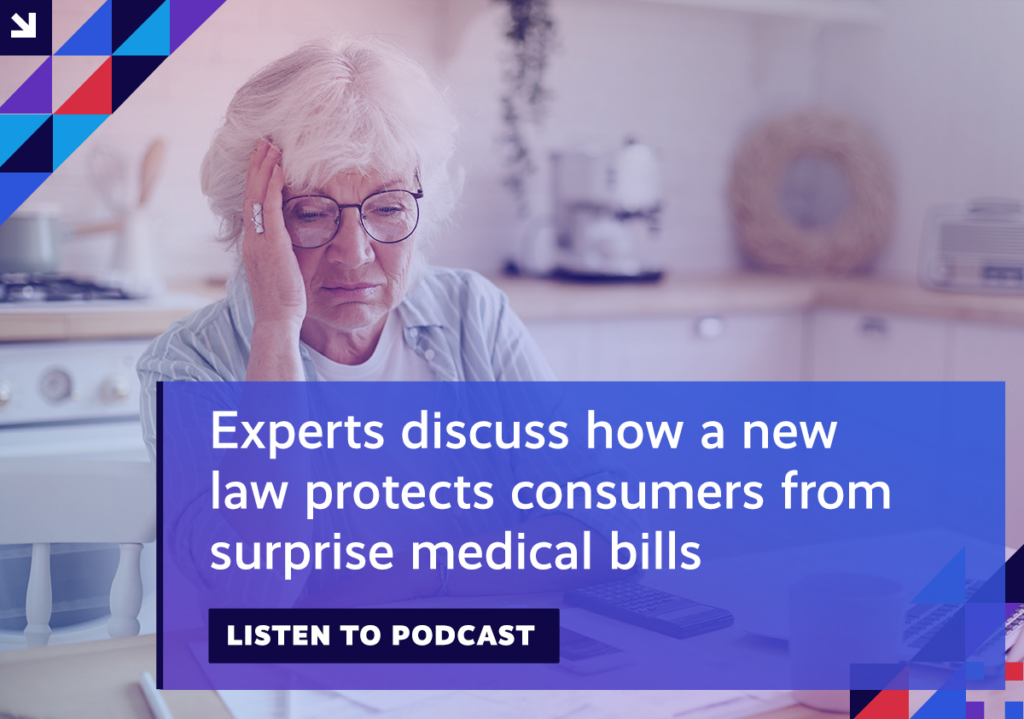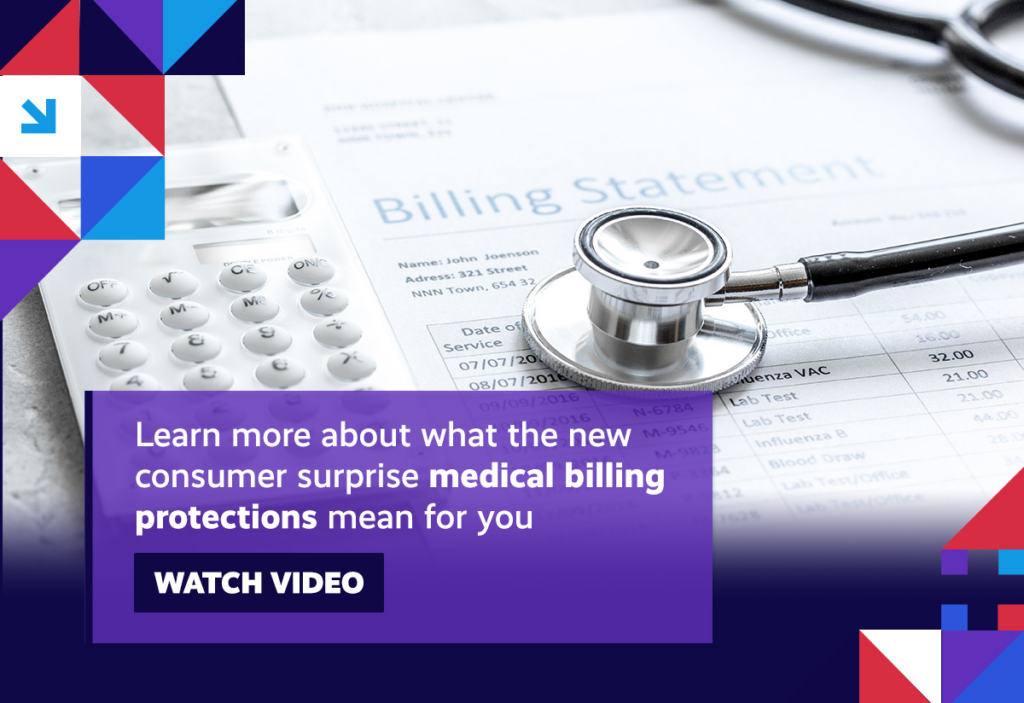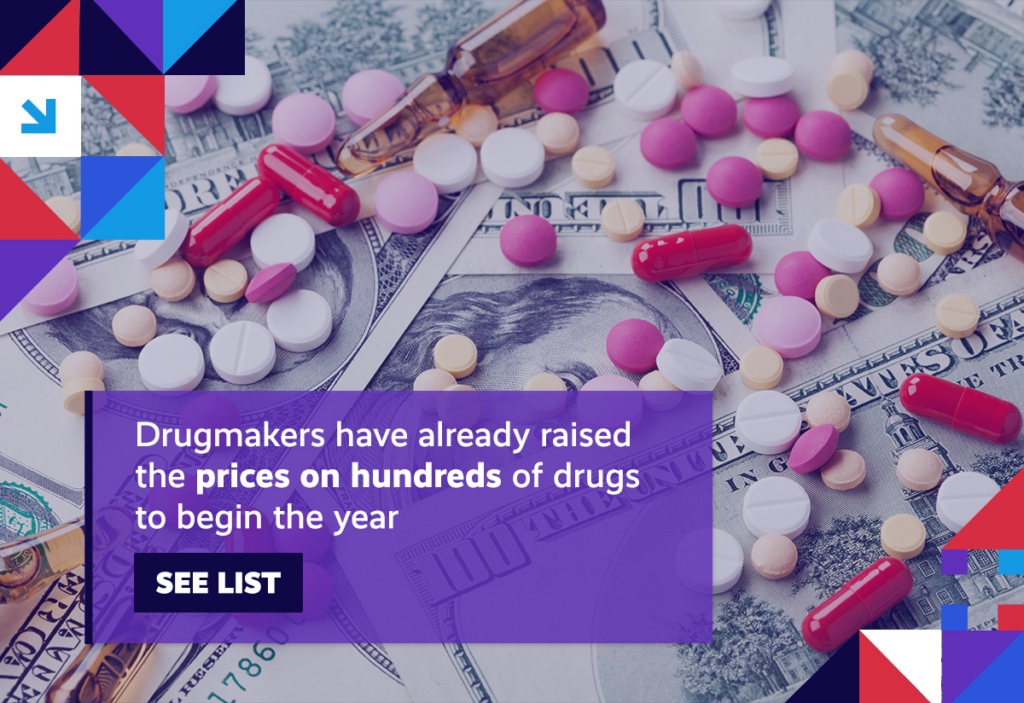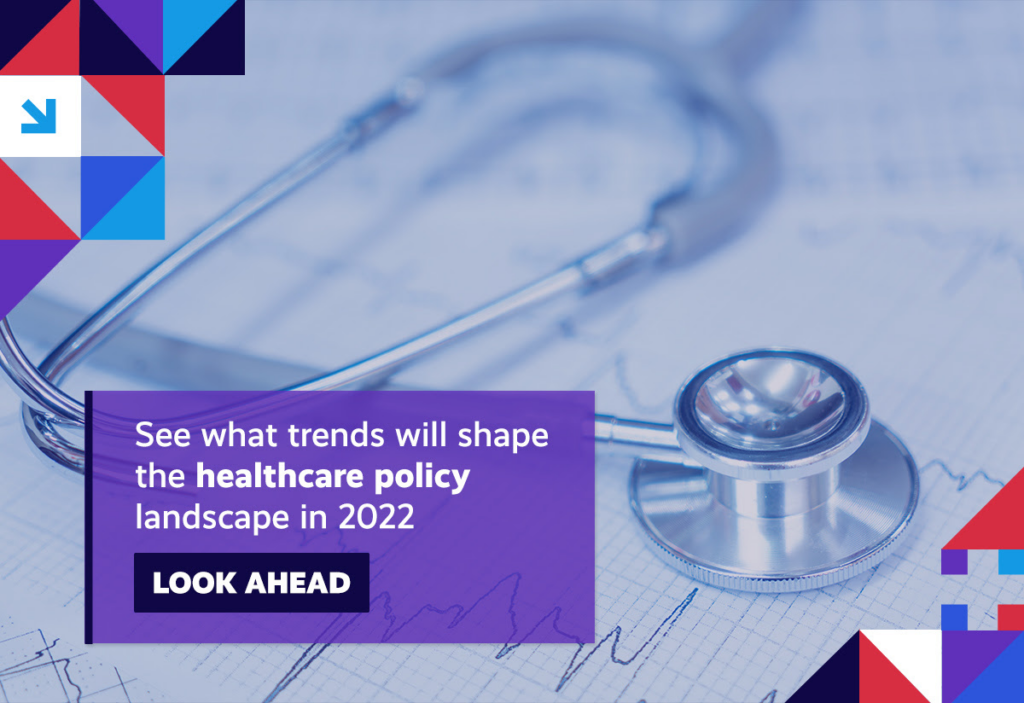New, consumer-friendly protections aimed at addressing surprise medical bills go into effect; Big Pharma rings in the New Year by raising prices on hundreds of drugs; meanwhile, increased focus is being paid to what hospitals charge for the drugs they distribute; and, facility fees for telehealth visits come under increased scrutiny.
We encourage you to stay involved as implementation efforts surrounding healthcare reform progress. Visit the Health Action Network and be sure to let us know what’s on your mind.
Item of the Week

Week in Review
Surprise Medical Bills: A new law went into effect on 1 January aimed at protecting consumers from surprise medical bills. As a reminder, surprise medical bills can result when patients – through no fault of their own – seek out and receive medical care, often in emergency settings, that’s delivered by providers or specialists outside their health plans’ network. In marking the implementation of the new consumer protections, Department of Health & Human Services (HHS) Secretary Xavier Becerra called the new rules “the most critical consumer protection law since the Affordable Care Act” and highlighted the years of bipartisan efforts that went into bringing these protections online. Those efforts drew widespread support from stakeholders across the healthcare spectrum, including employers, patient organizations, consumer groups, unions, and payers. While opponents continue to attack the law, driven largely by hospital and private equity interests, supporters are loudly applauding the Administration for fulfilling the promise of the “No Surprises Act” passed by Congress in late 2020.

Rx Price Hikes: It didn’t take long for Big Pharma to ring in the New Year the way it has every year in recent memory with unsettling regularity – namely, by hiking up the prices of hundreds of drugs. In fact, by the end of the first day of 2022, drugmakers had increased the list prices of 460 medications by a median of nearly 5 percent. While the number of drugs that saw their prices go up on 1 January was slightly down from previous years, the amount by which they increased easily eclipsed last year’s median of 3.3 percent in the early days of January. Stakeholders were quick to point out that this was just more of what’s to be expected from pharmaceutical manufacturers, who’ve made their annual price hikes business-as-usual, prioritizing profits while millions of Americans face continued financial uncertainty affording their medicines during the pandemic.

Hospital Rx Charges: As covered in a previous newsletter, hospital markups for the drugs they distribute from their own pharmacies has drawn increased attention from policymakers. At issue, the manner in which specialty drugs are procured for patients in a hospital setting. These drugs generally require special storage and handling, can be very expensive, have extremely short shelf-lives, and are used to treat patients with complex medical conditions. The practice through which these medicines are efficiently and safely distributed to hospitals through specialty pharmacies, which are better equipped to manage all these conditions, is known as “white bagging”. The term is important, as it not only helps keep costs down for consumers and plan sponsors (i.e., employers), but removes the burden from providers of having to manage the aforementioned conditions that attend the distribution of specialty drugs – and, all without any compromise to patient safety.
Telehealth Facility Fees: In the immediate wake of the coronavirus public health crisis, telehealth provided a critical lifeline to patients unable to access diagnostic and treatment services. It also enabled providers to tap into a critical revenue stream, providing some degree of financial insulation from the pandemic’s widespread disruption to normal operating procedure. However, reports have begun to surface of patients now being charged facility fees for telehealth visits, leaving many to wonder how that even makes sense. Hospital fees have come under increased scrutiny from patient and consumer groups, as these fees can add hundreds of dollars – or more – to a patient’s bill. Hospitals maintain that these fees are necessary to help cover the high cost of keeping their doors open and ready to provide care 24-hours-a-day. Compounding the issue, the trend in recent years that has seen more and more hospitals snatch up private physician practices, which then go on to charge these fees, too – meaning, that patients seeing the same doctor they’ve been seeing and receiving the same care they’ve been receiving are now on the hook for these extra fees, all as a result of a change in ownership.
Spotlight

| You can keep up with the latest by following the Health Action Network on Twitter and by liking us on Facebook. And, be sure to check us out on LinkedIn, too. As always, let us know if there’s something you’d like to see covered in a future newsletter. |
